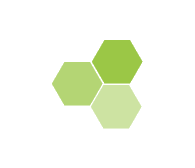Generating PDF document
Please, wait a moment

Too much time loading?
Reload the page and try again.
Please, wait a moment

Too much time loading?
Reload the page and try again.
Description
EduVAlab is developing major projects on e-learning and the new ways of interaction between actors in the education process. This group aims at promoting and developing the use of information technologies and telecommunications applied to education through pilot projects and experimental technologies. It is currently exploring the potential advantages of cooperative and competitive methodologies for learning, following this working lines: Assessment platforms and services. Universal accessibility to e-learning services. New formats, tools and methodologies. Gamification. As a result of the 2017 teaching innovation project "Actividades docentes georreferenciadas integradas en el Campus Virtual” (geo-referenced teaching activities integrated in virtual campus) of University of Valladolid, a tool was designed to develop outdoors teaching activities using mobile phones geo-referenced by GPS (Treasurehunt project).Other information
Number of researchers:
5
Development status:
Developed but not marketed
Intellectual Property Rights:
Susceptible Propiedad Intelectual
Differentiation in the market:
Novedad / Calidad
Applicability of technology:
Yes
Companies and markets:
Education sector. Training bodies, especially those using e-learning.
Advantages:
Using new ICT-based architectures and applications to provide new tools to the teaching/learning process.
Additional Information:
IDElab group is framed within the Intersemiotics, Translation and New Technologies (ITNT by its Spanish acronym) excellence research group. IDElab collaborates or have worked on international projects. Open-source philosophy.
UNESCO Code:
5801 - Educational theory and methods
Other members:
María Jesús Verdú Pérez
Luisa M. Regueras Santos
See more
Francisco Javier Merino Caminero
Elena Verdú Pérez
OBJECTIVESThis group, which began its activity in the early 1990s, originally focused its attention on basic lines of research related to Speech Recognition and Shape Recognition. As an evolution of this initial nucleus, the PROLETHA group subsequent... Read more >
OBJECTIVESThe group's objective is to generate knowledge and train research staff in the field of its lines of research, thus applying this knowledge to promote the use of Information and Communication Technologies (ICT) in the educational field.In p... Read more >
The ECA-SIMM group is constituted as a nucleus of researchers interested in Research, Development and Innovation in one of the following areas:- Man-Machine Interaction Systems of Human-Computer Interaction. Dialog- SystemsSpeech Language Technologie... Read more >
VALORIZATION OF BIOMASS BIOFUELS DISCARDED FROM THE LIGNOCELLULOSIC WASTE BIOMASS PRE-TREATMENT TECHNOLOGIES, ENZYMATIC HYDROLYSIS AND BIOCONVERSION OF SUGARS INTO BIOFUELS. - Main researcher: Silvia Bolado Rodríguez - PhD students: Rodolfo Travai... Read more >



